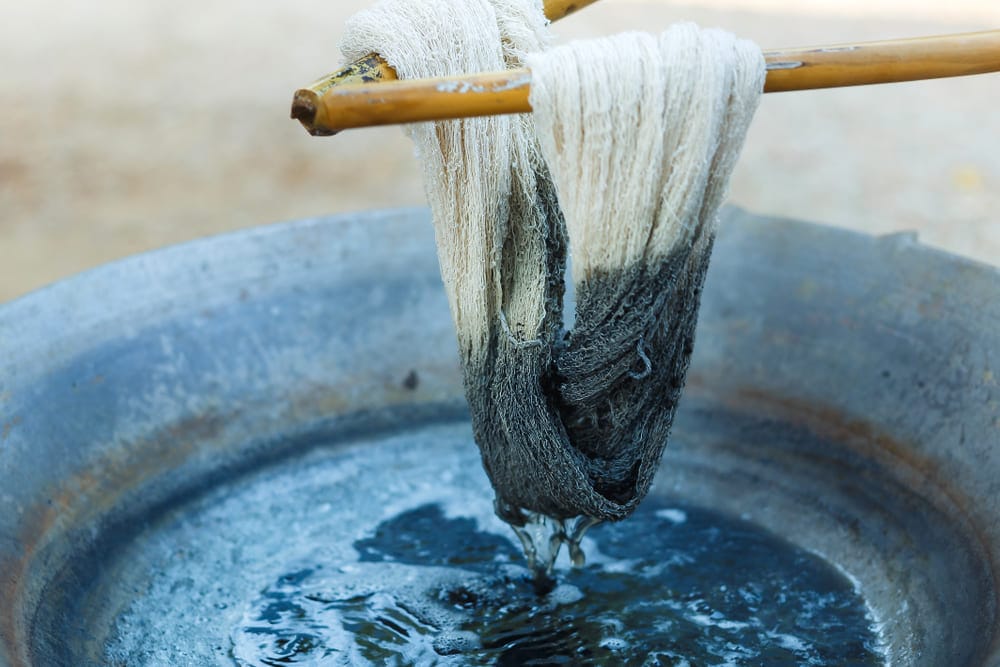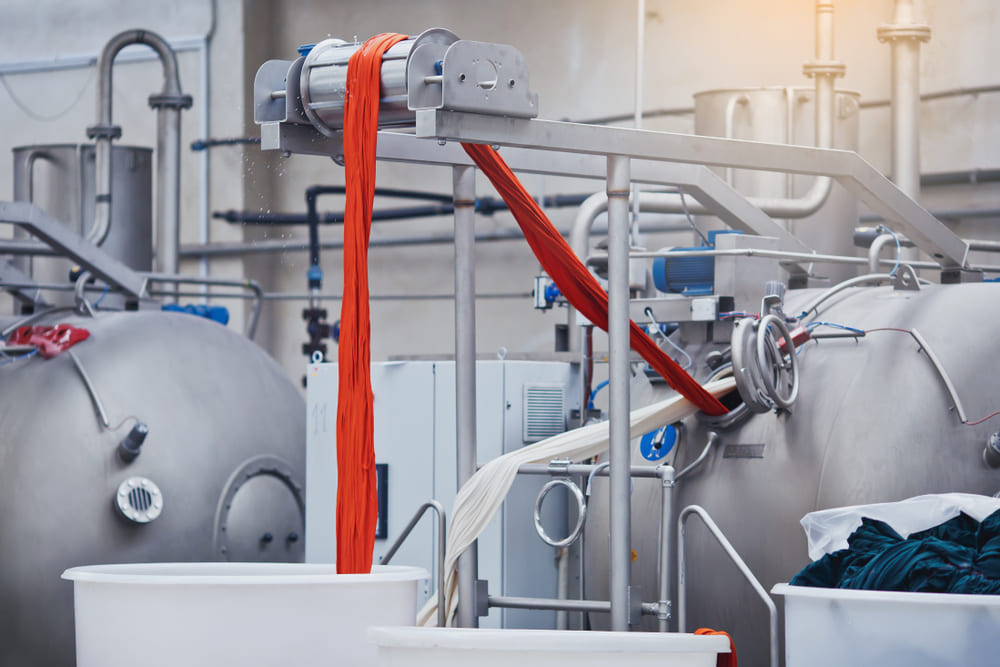- Home
- Blogs
- FabCouture
- The Latest Fabric Dyeing Techniques | FabCouture Blog
- The Latest F...
The Latest Fabric Dyeing Techniques | FabCouture Blog
- By FabCouture
- • Mar 13, 2023

Many types are there for fabric dyeing and the selection of dye depends upon the type of fabric. For example, acid dyes are typically used for wool, silk, and nylon, while direct or substantive dyes are used for cellulose fibers. Mordant dyes require the addition of chemical substances to create an affinity for the material being dyed. Sulfur dyes, while inexpensive, produce dull colors. Azoic dyes are insoluble pigments that are formed within the fiber by padding.
Vat dyes are insoluble in water but can be converted into soluble compounds by using alkaline sodium hydrosulfite. Disperse dyes are used for hydrophobic fibers such as polyester, nylon, and cellulose acetates. Reactive dyes combine directly with the fiber and produce excellent colorfastness. These dyes were first introduced for cellulose fibers in the mid-1950s and now come in a wide variety.

Methods of dyeing
Bale Dyeing
Bale dyeing is an efficient and cost-effective way of dyeing large quantities of fabric or yarn continuously. The process involves packing the fabric or yarn into a bale, which is then placed into a dyeing machine where the dye is circulated evenly. This method is commonly used for synthetic fibers like polyester that are challenging to dye in small quantities. Bale dyeing ensures color consistency and allows for large quantities to be dyed in a single run, making it popular in the textile industry for producing colored fabrics and yarns.
Batik Dyeing
Batik dyeing is a fabric dyeing technique that uses wax to create a design on the cloth before dyeing it. The wax resists the dye, leaving behind the original color in the waxed areas, creating a pattern. The fabric is then submerged in dye, and the wax is removed, revealing the design. The process can be repeated with multiple colors to produce complex designs. This traditional technique is widely used in various cultures and is commonly associated with Indonesian art and textiles. Although it is time-consuming and requires skilled artisans, the results are unique and stunning, making batik dyeing a popular and valued art form.
Beam Dyeing
The beam dyeing method is employed to dye a large quantity of yarn or fabric in a consistent manner. The fabric is wrapped around a perforated beam, which is then loaded into a dyeing machine. As the beam rotates, dye is injected through the perforations, resulting in uniform coloration. Beam dyeing is primarily used for synthetic fabrics that are challenging to dye using other methods. This dyeing technique is cost-effective and efficient as it enables large volumes of fabric to be dyed at once, ensuring consistent color quality. Beam dyeing is a common practice in the textile industry for producing dyed fabrics and yarns.
Burl Dyeing
To create a mottled or speckled appearance on fabric, burl or speck dyeing is used as a popular method. This technique involves tying or clamping the fabric in various places to create a resist, followed by dyeing. The areas that are tied resist the dye, resulting in a unique and attractive pattern. Burl dyeing is widely used for creating tie-dye designs, and it can be done using both natural and synthetic dyes. It is a favored method of dyeing for textiles, particularly for creating vibrant and distinctive designs on natural fibers such as print cotton fabric.
Chain Dyeing
Chain dyeing is a continuous method used to dye yarn or fabric. It involves passing the yarn or fabric through a dyeing machine that has a long chain that is constantly moving. The yarn or fabric is attached to the chain and is dipped into the dye bath as it travels through the machine. This technique ensures the uniform dyeing of the entire length of the yarn or fabric. Chain dyeing is commonly used in the textile industry for dyeing large quantities of natural and synthetic fibers. It is a cost-efficient and effective method of dyeing and provides high color consistency.
Cross Dyeing
Cross-dyeing is a technique in the textile industry that creates a multicolored effect by dyeing different types of fibers with different dye types. This can be achieved by dyeing the fibers separately and then blending them or dyeing them in the same bath with different dyes. It is commonly used to create heathered effects on fabrics, blending multiple colors for a muted, textured look. Cross-dyeing is also used to dye fabrics with both natural and synthetic fibers, where each fiber absorbs a different dye, resulting in a distinct and lively appearance.
Conclusion
There are a variety of fabric dyeing techniques available today that can help create a vibrant wardrobe. From traditional methods like batik and burl dyeing to modern techniques like chain and beam dyeing, each process offers unique advantages and produces different effects. Cross-dyeing allows for multicolored effects, while digital printing offers limitless design possibilities. Bale dyeing and spray dyeing are efficient methods for dyeing large quantities of fabric, while hand dyeing allows for individual creativity and customization. With the latest fabric dyeing techniques, anyone can create a wardrobe full of unique, colorful, and stylish garments.
Leave a Comment
Blogs
Popular Posts
Newletter
Thanks for subscribe.

Fabcouture is an online fabric store to satisfy all your couture fabrics cravings for fabric connoisseurs. We delight in the fact that we source...
0 Comment